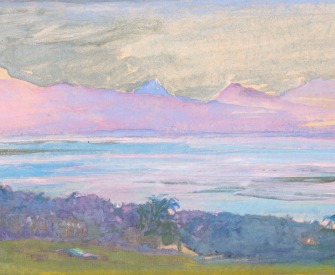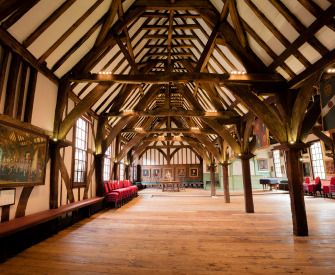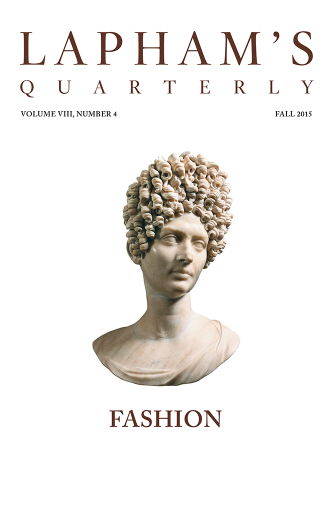February 2
Our pinnace returned from the shore of Juan Fernández Island and brought an abundance of crawfish—and a man clothed in goatskins who looked wilder than the first owners of them. He had been on the island four years and four months, being left there by Captain Stradling of the Cinque-Ports. His name was Alexander Selkirk, a Scotchman. While marooned on the island, Selkirk saw several ships pass by, but only two came in to anchor. As he went to view them, he found them to be Spaniards and retired from them—upon which they shot at him. Had they been French, he would have submitted, but he chose to risk his dying alone on the island rather than fall into the hands of the Spaniards in these parts, because he apprehended they would murder him or make a slave of him in the mines, for he feared they would spare no stranger that might be capable of discovering the South Sea.
He told us that he was born at Largo in the county of Fife in Scotland and was bred a sailor from his youth. The reason of his being left here was a difference betwixt him and his captain, which, together with the ships being leaky, made him willing rather to stay here than go along with him at first; and when he was at last willing, the captain would not receive him. He had been in the island before to wood and water, when two of the ship’s company were left upon it for six months till the ship returned, being chased thence by two French South Sea ships.
He had with him his clothes and bedding, with a firelock, some powder, bullets, and tobacco, a hatchet, a knife, a kettle, a Bible, some practical pieces, and his mathematical instruments and books. He diverted and provided for himself as well as he could, but for the first eight months had much ado to bear up against melancholy and the terror from being left alone in such a desolate place. He built two huts with pimento trees, covered them with long grass, and lined them with the skins of goats, which he killed with his gun as he wanted, so long as his powder lasted, which was but a pound—and that being near spent, he got fire by rubbing two sticks of pimento wood together upon his knee. In the lesser hut, at some distance from the other, he dressed his victuals, and in the larger he slept and employed himself in reading, singing psalms, and praying—so that he said he was a better Christian while in this solitude than ever he was before or than he was afraid he should ever be again.

Strait of Magellan from space, 2003. © Jacques Descloitres, MODIS Rapid Response Team, NASA/GSFC.
He might have had fish enough but could not eat them for want of salt, because they occasioned a looseness—except crawfish, which are there as large as our lobsters and very good. These he sometimes boiled, and at other times broiled, as he did his goats’ flesh, of which he made very good broth, for they are not so rank as ours. He kept an account of five hundred that he killed while there and caught as many more, which he marked on the ear and let go. When his powder failed, he took them by speed of foot, for his way of living and continual exercise of walking and running cleared him of all gross humors, so that he ran with wonderful swiftness through the woods and up the rocks and hills, as we perceived when we employed him to catch goats for us. He told us that his agility in pursuing a goat had once like to have cost him his life; he pursued it with so much eagerness that he caught hold of it on the brink of a precipice, of which he was not aware, the bushes having hid it from him, so that he fell with the goat down the said precipice, a great height, and was so stunned and bruised with the fall that he narrowly escaped with his life; and when he came to his senses, he found the goat dead under him. He lay there about twenty-four hours and was scarce able to crawl to his hut, which was about a mile distant, or to stir abroad again in ten days.
He soon wore out all his shoes and clothes by running through the woods, and at last his feet became so hard that he ran everywhere without annoyance; and it was some time before he could wear shoes after we found him: not being used to any for so long, his feet swelled when he came first to wear them again.
After he had conquered his melancholy, he diverted himself sometimes by cutting his name on the trees, the time of his being left, and his continuance there. He was at first much pestered with cats and rats that had bred in great numbers and which had got ashore from ships that put in there to wood and water. The rats gnawed his feet and clothes while asleep, which obliged him to stroke the cats with his goatskin, by which many of them became so tame that they would lie about him in hundreds—and they soon delivered him from the rats. He likewise tamed some kids, and to divert himself would now and then sing and dance with them and his cats, so that by the care of providence and vigor of his youth, being now but about thirty years old, he came at last to conquer all the inconveniences and his solitude and to be very easy. When his clothes wore out, he made himself a coat and cap of goatskins, which he stitched together with little thongs of the same that he cut with his knife. He had no other needle but a nail, and when his knife was wore to the back, he made others as well as he could of some iron hoops that were left ashore, which he beat thin and ground upon stones. Having some linen cloth by him, he sewed himself shirts with a nail and stitched them with the worsted of his old stockings, which he pulled out on purpose. He had his last shirt on when we found him in the island.
At his first coming on board with us, he had so much forgot his language for want of use that we could scarce understand him, for he seemed to speak his words by halves. We offered him a dram, but he would not touch it, having drank nothing but water since his being there, and ’twas some time before he could relish our victuals.
From A Cruising Voyage Round the World. Having been blown south in a storm while rounding Cape Horn, Rogers’ ship the Duke sailed to refresh provisions at Juan Fernández Island, where the privateer made the acquaintance of the marooned Selkirk. His description of the encounter served as the inspiration for Daniel Defoe’s Robinson Crusoe, published in 1719. Rogers had convinced Bristol merchants to finance the voyage in order to combat the perceived trading monopoly held by Spain and France in South America.
Back to Issue






